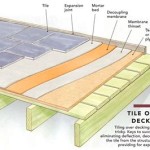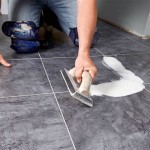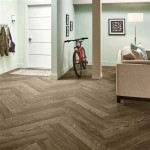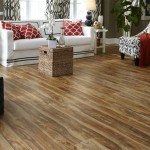Vinyl or Laminate Flooring: Which is Better?
Choosing new flooring for your home can be a daunting task. With so many materials and styles available, it's tough to decide what's best for your needs and budget. Two popular options that often come up in discussions are vinyl and laminate flooring. Both offer attractive aesthetics and durability, but they also have distinct differences in terms of cost, performance, and maintenance. This article will compare vinyl and laminate flooring, highlighting their key features, benefits, and drawbacks, to help you make an informed decision.
Durability and Water Resistance
Vinyl flooring boasts excellent durability and water resistance. It's made from PVC (polyvinyl chloride), a synthetic material known for its resilience against scratches, dents, and fading. Vinyl can withstand heavy foot traffic and is ideal for high-moisture areas like kitchens, bathrooms, and laundry rooms. Some vinyl products are even waterproof, making them a great choice for spills and accidental flooding.
Laminate flooring, on the other hand, is composed of layers of fiberboard topped with a patterned image and a protective wear layer. While laminate is durable and resistant to scratches and stains, it is not as water-resistant as vinyl. Moisture can penetrate the seams and damage the core, leading to warping and swelling. Therefore, laminate is generally not recommended for wet areas.
Cost and Installation
Vinyl flooring is generally more affordable than laminate flooring. This is because vinyl is a less complex material to manufacture, and it's often offered in both sheet and tile formats, allowing for easier installation. Sheet vinyl can often be installed directly over existing flooring, while tile vinyl requires a proper subfloor.
Laminate flooring often comes at a higher price point due to its more intricate construction and the use of high-quality imaging technologies. However, its price range can vary depending on the type of wood look and the quality of the wear layer. Laminate flooring is typically easier to install than vinyl, especially with click-lock systems, which allow for a simple and seamless installation process.
Style and Aesthetics
Both vinyl and laminate flooring offer an impressive array of styles and designs to complement any home decor. Vinyl flooring can closely mimic the appearance of natural materials like wood, stone, and tile, and it's also available in solid colors and patterns. Laminate flooring excels in replicating the look of hardwood, offering a wide variety of wood species, colors, and finishes.
However, laminate flooring is often criticized for its artificial feel, as it doesn't have the same natural variations and textures as real wood. Vinyl flooring, on the other hand, can offer a more natural aesthetic with the use of embossing and texturing techniques. Ultimately, the choice of style boils down to personal preference and the overall design scheme of your home.
Maintenance and Cleaning
Both vinyl and laminate flooring are relatively easy to maintain and clean. Regular sweeping or vacuuming is sufficient for both materials. Spills and stains can be easily wiped up with a damp mop or cloth.
Vinyl flooring can be cleaned with mild cleaning solutions, while laminate flooring typically requires a specialized cleaner that won't damage the protective wear layer. It's crucial to avoid using abrasive cleaners or harsh chemicals as they can scratch or dull the surface.
Environmental Considerations
Vinyl flooring is composed of PVC, a synthetic material derived from petroleum. The production of PVC involves the release of harmful greenhouse gases, and the disposal of vinyl flooring can pose environmental challenges. However, some manufacturers are now offering vinyl products made from recycled materials and with lower VOC emissions.
Laminate flooring is typically made from wood fibers, which are a renewable resource. However, the manufacturing process involves the use of formaldehyde, a known carcinogenic compound. It's important to choose laminate flooring with low formaldehyde emissions for a healthier home environment.
Final Thoughts
Both vinyl and laminate flooring offer valuable characteristics and can be excellent choices for your home. Vinyl excels in water resistance and affordability, making it ideal for high-traffic areas and bathrooms. Laminate flooring offers a more realistic wood look and is easier to install. By carefully considering your budget, space, and maintenance preferences, you can determine which option best suits your individual needs and preferences.

Vinyl Vs Laminate Flooring Pros Cons And Differences 2024 Forbes Home

Vinyl Vs Laminate Flooring What S The Difference

Laminate Vs Vinyl The Home

Laminate Vs Vinyl What You Need To Know

What S The Difference Between Vinyl And Laminate Flooring Igloo Surfaces

Laminate Vs Vinyl Flooring Comparison Guide
What Is The Best Kind Of Flooring Vinyl Or Laminate Quora

Pt Jati Luhur Agung How Do Vinyl And Laminate Flooring Differ

Lvp Vs Laminate Atiyeh Bros Portland Rug And Carpeting Experts

Laminate Vs Vinyl Flooring Comparison Guide
See Also







